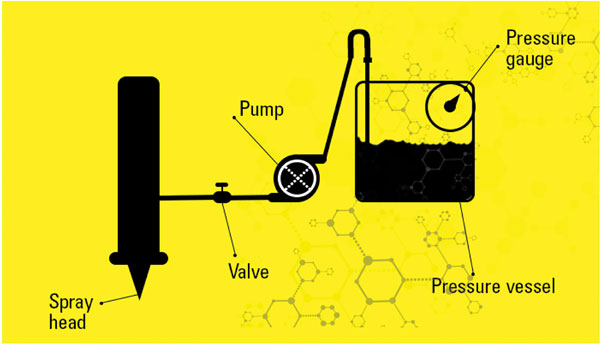When and How to Clean/Flush Selective Coating Equipment
 Build-in cleaning time during chemistry changeovers and after extended line shutdowns.
Build-in cleaning time during chemistry changeovers and after extended line shutdowns.
Much time and planning are invested in the choice of the ideal conformal coating material and process to adequately protect printed circuit boards. This often includes multiple qualification trials. There is also sometimes long and detailed testing in areas such as electrical performance, flame resistance, and thermal or mechanical cycling. Unfortunately, the qualification and testing process for conformal coatings is simply a snapshot of the process at the start. To maintain consistency, an often-overlooked activity remains: regular cleaning and flushing of the selective conformal coating equipment.
In general, the following comments and guidelines are designed for a discussion involving typical modern selective coating equipment (FIGURE 1). However, nearly all the principles are applicable to manual spraying operations as well.

Figure 1. Typical pressurized application system.
Why clean and flush? Before discussing the specific considerations involved in the clean and flush process, let’s explain the reasoning behind it. Beyond the obvious answer that it is simply good practice, there are a few reasons to regularly clean and flush the selective coating system:
- The process improves the working life of key components such as valve(s), nozzles and spray heads, and feed and return lines.
- The process minimizes inconsistency due to clogs or buildups.
- Cleaning and flushing improve reliability and consistency of flow rates and material usage, application thickness, and coating pattern width and edge definition.
- Regular maintenance prevents cross-contamination from incompatible chemistries.
(Note: When a silicone coating chemistry is used, never use the same fluid lines, valves or pressure pot when converting to other chemistries, such as acrylics, urethanes, synthetic rubbers, and so forth.)
When to clean and flush? There are a number of fairly obvious circumstances and times when it is advisable to thoroughly clean and flush your selective conformal coating equipment. They include the following:
- Startups or changeovers to different coating chemistries, such as acrylic to urethane and synthetic rubber to acrylic.
- At startups after shutdowns of 48 hr. or more for acrylic, synthetic rubbers, and non-moisture-sensitive materials.
- At the end-of-production day for moisture-sensitive materials, including most silicones and many urethanes.
- Any time inconsistent spray patterns or flow rates are observed.
How to clean and flush? Here are the basic steps to cleaning and flushing manual or selective coating equipment. (Note: Please consult the respective equipment manufacturer to discuss details before attempting.)
- Remove excess coating from the reservoir or pressure pot.
- Remove the air cap (if applicable) of the valve and back off the micrometer (if applicable) to permit more needle travel.
- Flush the coating from the coating reservoir, fluid lines and valve until there’s no coating coming out.
- Add a compatible solvent/thinner (MEK, xylene, commercial thinner) to the fluid reservoir.
- (Important: Use thinners provided by your coating manufacturer, not stripping agents, which are used for removing cured coatings from PCBs.)
- Turn on the machine blacklight.
- Flush until the solvent/thinner stops fluorescing blue. Do this if the coating contains fluorescing agents; otherwise, flush until the coating appears to be eliminated.
- Add a small amount of additional thinner.
- Flush just until the moment when the fluid becomes spray. The fluid will go from a stream to a spray when the flushing fluid runs out. Then stop. If done correctly, the process will leave a very small amount of solvent/thinner in the fluid lines/valve.
To restart the process, flush the remaining solvent from the fluid reservoir/fluid lines/valves. Now the machine and valve are ready to be filled with fresh coating.
is senior technical specialist at Chase Corp. (Humiseal).
Press Releases
- Libra Industries Appoints Greg Rowell as Global Director of Continuous Improvement
- OGP Announces Panos Angelopoulos as President of Global Sales
- Rohde & Schwarz opens larger office in Japan to increase its support for the Japanese automotive market
- ASC Sunstone Circuits Boosts Domestic Manufacturing Capabilities with Integrated Via Fill Technology







